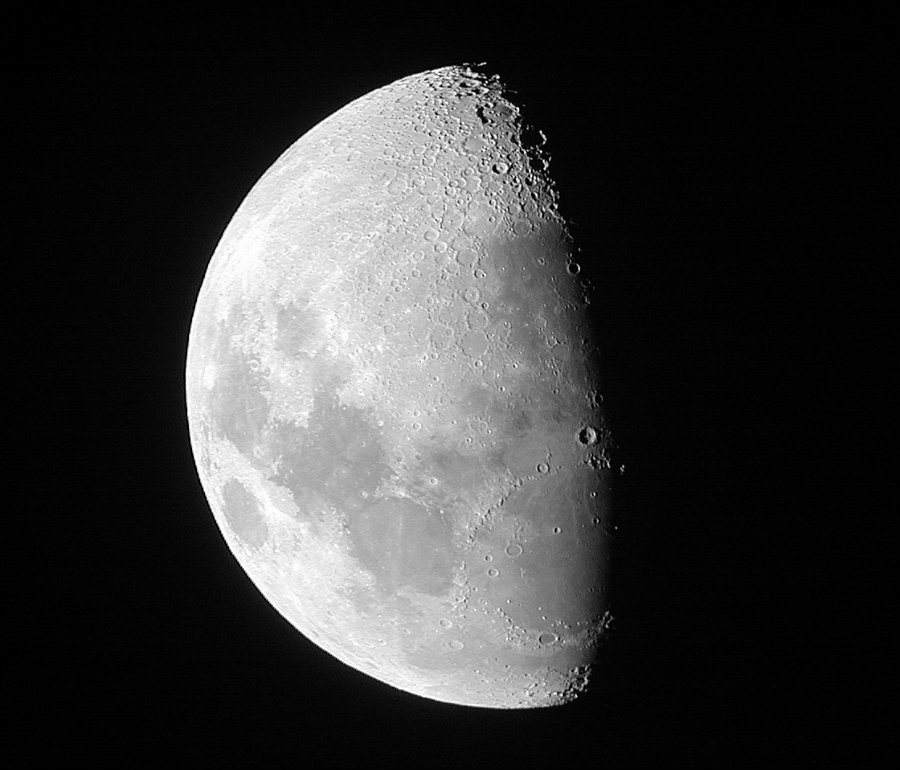Researchers from the Weizmann Institute of Science in Rehovot, Israel, assure that the moon may have formed by a series of smaller objects getting together after colliding with a younger Earth.
They explain that the multiple impact scenario is more natural than the single impact theory, suggesting that several impacts would have provided more material resembling the Earth’s composition than a single blow. Several theories try to explain the formation of the moon, but it is just now that researchers appear to have nailed the story about how our 4.53-billion-year-old satellite came to be.

How the moon was born
The moon is often said to be very similar to Earth, as it is covered with dead volcanoes, craters, and even extinct lava flows. The first astronomers believed that those dark, large spots on the moon were oceans that once had water. In reality, these pools are made of hardened lava. Just like the Earth, the Moon has a crust, a mantle, and a core that’s probably made of solid iron covered by molten liquid iron.
The lunar surface is also known for not having a protective atmosphere, leaving it open to pummeling from asteroids, something that allowed scientists to uncover details about its past.
Until the latest discovery, scientists believed that a large body had crashed into Earth shortly after it was formed out of dust and gas emitted from the sun. The body is known as Theia, which apparently had the size of Mars. The collision with Theia would launch large chunks of the Earth up into space. Then, gravity would act and join the biggest pieces together, making way for an early version of the moon.
There is also a theory suggesting that our moon had formed by gravity, similar to Earth’s formation but without an initial impact. This approach has been regarded as unlikely due to the slim chance that both the Earth and the moon share the same elements in their core, seeing that Earth’s geology is much more dynamic and changing.
Another theory explains that Earth might have picked up the moon by chance as it was passing along its orbit, which is the case of the Martian moons Phobos and Deimos. The only problem is that orbiting objects of this kind are irregularly shaped, differing from our round and pale satellite.
What is being proposed?
The team led by Raluca Rufu noticed that the single impact theory had faulty supporting the constraints posed by momentum and the laws of physics, which make the theory highly unlikely to occur unless a particular scenario occurs at the precise time.
Rufu suggests that several smaller impacts took place on Earth, causing a debris disk to orbit around the young Earth. These pieces of material would then come together to form a small moon. The theory is backed by the existing evidence of such impacts, creating moonlets in the early stages of the Solar System.
Rufu believes that at least 20 impacts had to occur to form the moon that we know to this day, and this theory’s conditions are more probable. The objects causing the collision can travel at a higher relative velocity and thus expel more material from Earth’s crust, allowing the moonlets to be composed of terrestrial elements.
The report also proposes that the Earth’s rotation was, by inference, much faster back then, having a 5-hour day. After the impact of several smaller objects, such rotatory speed would have been reduced, resulting in the 24-hour spin rate that we know. The moon formed 100 million years after the Earth did, and it seems that both bodies share a very similar history.
The moon, besides altering ocean tides can also cause earthquakes. Disastrous earthquakes, such as the ones occurred in Japan in 2011 and Chile in 2010, are believed to occur with a much higher frequency during full and new moons, which is when the tidal stress factor is at its peak.
The tides put a greater deal of pressure on the geological faults, causing plate tectonics to collide with one another. Researchers at the University of Tokyo found a link between tidal stress factor and earthquakes 15 days before the seismic activity having occurred. The earthquakes in Chile and Tohoku-Oki appear to have taken place when the tidal stress was at its highest. Also, for at least 10,000 earthquakes of magnitude 5.5, they were more likely to become magnitude 8 or more.
Even if we believe that the moon has been conquered by us humans, the truth is that there is still a good deal of scientific research that could be made in our nearest satellite. Currently, NASA has refrained from launching any mission that would mean another moon landing; although it appears that the moon will be the main spot to build space resorts and observatories by private companies interested in space entrepreneurship.
Source: Nature
